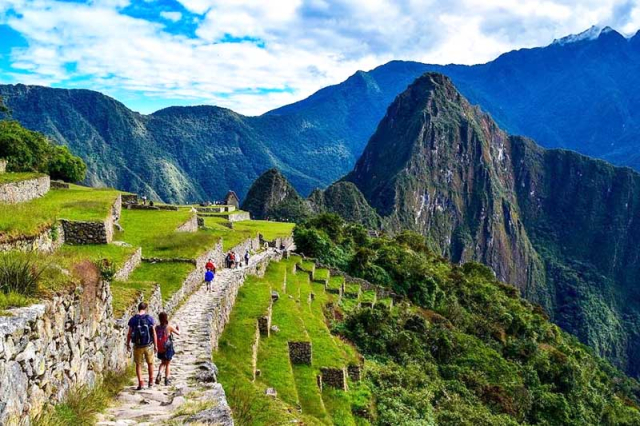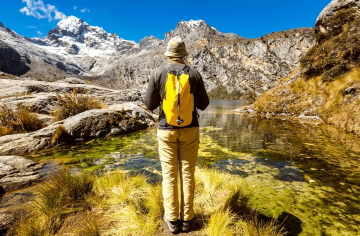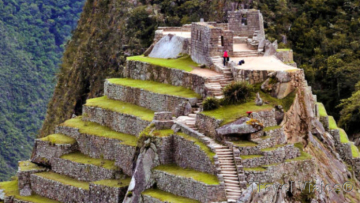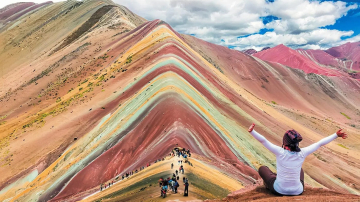The Qhapaq Ñan , also known as the Great Inca Road , is one of the most fascinating historical and cultural wonders of South America . This intricate system of roads connected the vast Inca Empire, stretching for more than 30,000 kilometers from Colombia to Chile and Argentina , with its heart in Cusco, Peru . Recognized as a World Heritage Site by UNESCO in 2014 , this road system not only stands out for its architecture and expanse, but also for its deep cultural and spiritual significance to Andean communities.
In this article, we will explore how you can travel and enjoy the Qhapaq Ñan Route , discovering its history, its main sections and the practical details for an unforgettable experience. Whether you are looking for a challenging adventure or a deeper connection with the roots of Peru , this path offers you a window to the past and the heart of the Andes.
1. The Qhapaq Ñan: A Masterpiece of Inca Engineering
The Qhapaq Ñan was built with astonishing precision to connect the main cities and ceremonial centers of the Inca Empire , known as Tahuantinsuyu . Designed to traverse difficult terrain such as mountains, valleys, and deserts , the road included stone steps, suspension bridges, and tambos (rest and supply points).
The Incas not only used this road for the transport of goods and people , but also as a communication network through chasquis, messengers who ran long distances carrying quipus (accounting systems) and oral messages. In addition, the Qhapaq Ñan played a spiritual role, connecting sacred and ceremonial places that were fundamental to the Inca worldview.
2. Must-See Sections for Travelers
Although the system covers thousands of kilometers , some sections in Peru stand out for their accessibility and cultural richness. Here are three of the most iconic:
-
The Inca Trail to Machu Picchu : This is the most famous section of the Qhapaq Ñan , a 4-day trek that culminates at the citadel of Machu Picchu. Along the way, travelers pass through stunning Andean landscapes , archaeological ruins such as Wiñay Wayna , and areas of high biodiversity.
-
The Chavín to Huánuco Pampa Trail : This lesser-known stretch connects important pre-Incan and Incan ceremonial centers , such as the Chavín de Huantar temple. It is ideal for those looking for a less crowded but equally impressive experience.
-
The Sacred Valley Trail Network : This set of routes interconnects towns such as Pisac, Ollantaytambo and Chinchero. It is an excellent option for those wishing to explore segments of the Qhapaq Ñan in a single day.
Each section offers a unique experience, from physical challenges to moments of cultural and spiritual introspection.
3. Preparations for Touring the Qhapaq Ñan
Hiking the Qhapaq Ñan requires preparation and planning . Here are some essential tips:
-
Physical condition : Although some sections are accessible for beginners , the altitude and long hikes can be challenging. An acclimatization period in Cusco or other Andean cities is recommended.
-
Appropriate equipment : Bring comfortable clothing, hiking boots, sunscreen, a hat and a good coat for cold nights. A light backpack and enough water are also essential.
-
Specialized guides : To maximize your experience and ensure your safety , hire certified tour operators. They will provide you with historical and cultural information , as well as logistical support.
-
Respect for the environment : The Qhapaq Ñan passes through fragile ecosystems and traditional communities. It follows responsible tourism standards to preserve this legacy for future generations.
4. The Spiritual Connection of the Path
Beyond being an engineering feat, the Qhapaq Ñan has a deep spiritual meaning. For the Incas, the roads were an extension of Pachamama (Mother Earth) and a means to connect with the universe. During the tour, travelers can participate in traditional ceremonies , such as offerings to the earth, led by local guides or shamans.
This spiritual aspect adds a unique dimension to the experience, allowing visitors to reflect on their relationship with nature and ancestral cultures.
5. When and How to Visit
The best time to visit the Qhapaq Ñan is during the dry season , from May to September , when there is little rain and the roads are in optimal condition. The months of June and July are especially recommended, as they coincide with festivals such as the Inti Raymi (Festival of the Sun), which is celebrated in Cusco.
It is important to book in advance, especially for popular sections such as the Inca Trail to Machu Picchu , where tickets are limited. It is also recommended to book tours that include transportation, accommodation and necessary permits.
Walking the Qhapaq Ñan is much more than an adventure; it is a transformative experience that connects you with the roots of one of the most important civilizations in history . Along its paths, you will not only discover impressive landscapes, but also stories, traditions and the ancestral wisdom of the Andes.
If you are looking for a unique way to explore Peru, the Qhapaq Ñan Route is an unbeatable choice. Pack your backpack, choose your section and embark on a journey that will remain forever engraved in your heart and memory.
We invite you to learn more about Peru here: Blogs from Peru.




